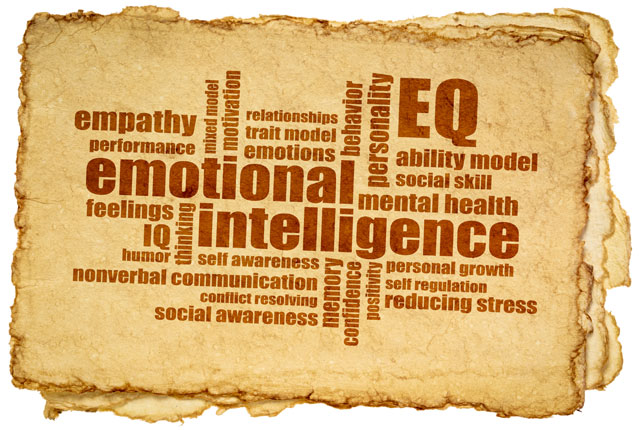By the end of this article, students should be able to:
- understand operational definitions and how they help in goal-setting;
- set goals for themselves and their clients;
- evaluate the effectiveness of goals.
What does it mean to have a goal? If you have a goal to change your physical wellness, how will you know if you are successful? Is it a feeling? Is it something more tangible? This article will tell you all you need to know about setting realistic, measurable, and effective goals. Without goals, how would you ever know if you have accomplished something?
What is this? We are starting with an activity instead of a lecture? Sure, why not. Variety is the spice of life. Plus, it would not be as fun to do this activity at the end.
Here is what you need to do. Write out the directions for making a peanut butter and jelly sandwich. Yes, that is all. Get to it! (P.S. It is not necessary to fill in all the steps, or you may need more; it is up to you.)
How To Make a Peanut Butter and Jelly Sandwich
Step 1:
Step 2:
Step 3:
Step 4:
Step 5:
Step 6:
Step 7:
Step 8:
Step 9:
Step 10:
Use additional paper if needed
Okay, but we have already talked about how all of us, whether wellness coaches or clients, are part of the human experience. So this does not apply, right? Wrong. The 39-step sandwich is a fun example of operational definitions. Now is time for the lecture!
Operational definitions are measurable ways to define whether something is successful or not. The steps in the peanut butter and jelly sandwich exercise were one long, operational definition. At the end, you could determine if the goal of making the sandwich was accomplished or not.
It is important to at least have a background understanding of operational definitions before you set goals for yourself or your clients. Compare the following two goals:
"I want to feel better about my body."
"I want to fit into my pre-pregnancy clothing and walk up three flights of stairs without losing my breath."
The first goal is completely subjective. That is fine and dandy for the person setting it, but if you are the coach, how do you know where to focus your coaching? You could rely on simply asking frequently, "Do you feel better about your body? How about now? Now?" However, it would be better to create measurable goals.
You also have to keep goals in the realm of possibility. A goal of losing 250 pounds in a year is unrealistic. So is losing 10 pounds in one week. If you are unsure if a client's goal is realistic, do some research online. You should be able to figure out fairly quickly what is realistic and what is probably not going to work. It is good for clients to want to achieve big goals, but it is the job of the wellness coach to help the client break them down into units that are achievable and will motivate the client to continue moving forward.
Activities to Help You Set Goals: Free Writing and Brainstorming
Both free writing and brainstorming are activities that many people have already done in school and/or at work. They are tools to help you get organized, focused, and productive. Instead of staring at blank paper, just start writing. What follows are examples of each type of exercise.
Free Writing Example One: Listing
Topic: Mind Wellness Goals
Creativity
Memory
Recall
Names
Faces
Witness
Eyewitness
Reliability
Confidence
Social
Friends
Networking
Skills
Impressions
Flattery
Less awkwardness
Introductions
Meetings
Presentations
Result: From listing on the topic of mind-wellness goals, this client formed the following goal: "To be able to recall 10 people by face and name throughout a social event." This particular client spent a great deal of energy feeling anxious about social events because she realized she had a hard time remembering names and faces. With this specific goal, the job coach can formulate specific strategies and aids to help the client achieve this goal.
Free Writing Example Two: Flowing
Topic: Financial Wellness Goals
I'm broke so broke, I can't think straight. I can't get a new car. I can't pay for the old one. I don't know when I'm ever going to be able to save for my son's college education! I have too many bills and too little time and money to pay them and still be with my family and friends and do things that are important to me. I want to let go of this stress and not have bill collectors calling my house and sending me letters and making me feel so ashamed of myself for being this age and having these problems. I don't want to end up like someone who has to file bankruptcy or whose kids have to contribute money from their jobs when all they should be worried about is spending their money on what they want and being kids and getting good grades.
- To answer each of the creditors' phone calls at least once and request a business name and address.
- To send a handwritten request to each creditor requesting that phone calls be stopped, as is allowed in Fair Debt Collection practices.
- To list all current bills and money owed so the client is aware of exactly what he is facing.
- To start paying something regularly on each debt owed, even if it is not the full amount.
In these ways, the client felt he again had some control over his finances and that he was setting a better example for his children. It did not solve his financial problems, but it put him on the road to financial recovery, which is better than avoiding the problem altogether.
Brainstorming Example
In addition to the free writing examples illustrated above, brainstorming is classically taught in English classes through circles and clouds, indicating ideas that shoot to other ideas or concepts.
As you can see, one idea begets another, spawns another, and so on. The more detailed the ideas get, the closer you are to specific goals. This kind of brainstorming can take time and practice to really get the hang of. Coaches, this technique for getting to goals can be well-suited to visual learners, people with creative backgrounds, and sometimes younger clients who may like doing the exercise with different colored markers. Having a nice, big dry erase board can also be helpful for this exercise.
When you and/or the client have identified several goals, you need to record them somewhere. For our purposes, we will refer to this as the "wellness plan." You can call it whatever you want and dress it up however suits you best.
Once you have some goals in your wellness plan (three to five goals are a good starting point, and more than 10 is too many), you should decide upon a time to check in on those goals. This can be every time you meet with your wellness coach, every other time, once a month, once a quarter, and so on.
Include this on your wellness plan, so you do not forget. Then make a point of pulling out the wellness plan as scheduled and talking about the goals. Have they been met, do they need to be revised, does something else need to be prioritized because of current events in your life?
It is important to view the wellness plan as an ever-evolving item. Unless you were really ambitious, you did not get it engraved in anything, and you did not write it in blood. Erasers and white-out were invented for these times.
A coach might say, "I know this is your wellness plan and these are the goals you want to work on. I'm concerned because I've noticed that we haven't yet accomplished a goal. I wonder if there's something we should be talking about or looking at. What do you think?"
Open-ended questions are good in these cases because they will get a dialogue flowing between you and the client. Even if the client does not want to talk about it at that time, the seeds have been planted and it will probably come up again at a later time, when the client is more open to the discussion.
You might say, "I was sad when I saw that you wanted to give up on this goal because I knew you had it in you. I wonder if anyone else in your life feels that way when they see you about to back down from an opportunity for accomplishment."
Again, you are not a therapist or a doctor. You are a coach. You are cheering clients for their accomplishments, helping them see things from different perspectives, and assisting them in finding ways to achieve their wellness goals. Along the way, it is a safe bet you will be learning some things, too.





























